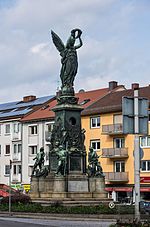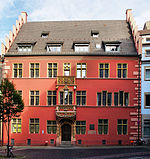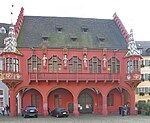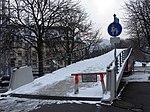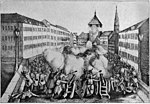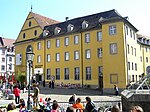29th Division (German Empire)
The 29th Division (29. Division) was a unit of the Prussian/German Army, almost entirely made up of troops from the Grand Duchy of Baden. It was formed in Karlsruhe on 1 July 1871. The division was subordinated in peacetime to the XIV Army Corps (XIV. Armeekorps). The 29th Division was disbanded in 1919 during the demobilization of the German Army after World War I. The division, along with the other division of the XIV Army Corps, the 28th Division, was formed in the Grand Duchy of Baden, a member state of the German Empire. Both divisions grew out of the Grand Ducal Baden Division (Großherzoglich Badische Division), the army of the grand duchy. The Grand Ducal Baden Division had fought against Prussia in the Austro-Prussian War, but after Prussia's victory Baden and most other German states had entered into conventions subordinating their armies to Prussia's. The Grand Ducal Baden Division served in the Franco-Prussian War against France in 1870-71, where its regiments saw action in the Siege of Strasbourg and the Battle of the Lisaine.In peacetime, the 29th Division was stationed in southern Baden (the 28th covered northern Baden), with garrisons in southern Baden and across the Rhine in Alsace. In World War I, the division served on the Western Front, seeing action at the Battle of the Frontiers and then moving north during the Race to the Sea. It participated in some of the more well-known battles and campaigns of the Western Front, including the 1916 Battle of the Somme, the later phases of the Battle of Verdun, the Second Battle of the Aisne (also known as the Third Battle of Champagne and to the Germans as the Double Battle on the Aisne and in the Champagne), and against the Allied Hundred Days Offensive.
Excerpt from the Wikipedia article 29th Division (German Empire) (License: CC BY-SA 3.0, Authors).29th Division (German Empire)
Europaplatz, Freiburg im Breisgau Old Town
Geographical coordinates (GPS) Address Nearby Places Show on map
Geographical coordinates (GPS)
| Latitude | Longitude |
|---|---|
| N 47.997777777778 ° | E 7.8530555555556 ° |
Address
Europaplatz 1
79098 Freiburg im Breisgau, Old Town
Baden-Württemberg, Germany
Open on Google Maps
